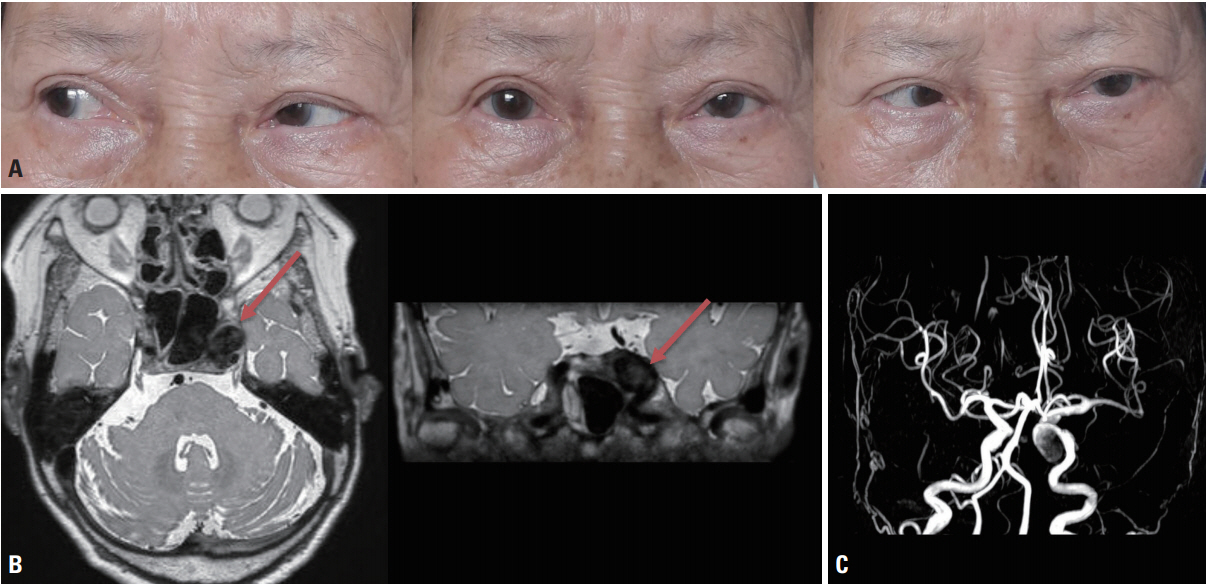Ann Clin Neurophysiol.
2020 Apr;22(1):46-47. 10.14253/acn.2020.22.1.46.
Isolated abducens nerve palsy due tointernal carotid artery aneurysm
- Affiliations
-
- 1Department of Neurology, Haeundae Paik Hospital, Inje University College of Medicine, Busan, Korea
- KMID: 2500305
- DOI: http://doi.org/10.14253/acn.2020.22.1.46
Keyword
Figure
Reference
-
1. Richards BW, Jones FR Jr, Younge BR. Causes and prognosis in 4,278 cases of paralysis of the oculomotor, trochlear, and abducens cranial nerves. Am J Ophthalmol. 1992; 113:489–496.
Article2. Choi KD, Choi SY, Kim JS, Choi JH, Yang TH, Oh SY, et al. Acquired ocular motor nerve palsy in neurology clinics: a prospective multicenter study. J Clin Neurol. 2019; 15:221–227.
Article3. Krisht A, Barnett DW, Barrow DL, Bonner G. The blood supply of the intracavernous cranial nerves: an anatomic study. Neurosurgery. 1994; 34:275–279. discussion 279.4. Maitland CG, Black JL, Smith WA. Abducens nerve palsy due to spontaneous dissection of the internal carotid artery. Arch Neurol. 1983; 40:448–449.
Article
- Full Text Links
- Actions
-
Cited
- CITED
-
- Close
- Share
- Similar articles
-
- Isolated Bilateral Abducens Nerve Palsy Caused by Basilar Artery Dissecting Aneurysm
- Unilateral Abducens Nerve Palsy Associated with Ruptured Anterior Communicating Artery Aneurysm
- Isolated bilateral abducens nerve palsy due to carotid cavernous dural arteriovenous fistula
- Persistent Primitive Trigeminal Artery Aneurysm: A Case Report
- Isolated ipsilateral abducens nerve palsy and contralateral homonymous hemianopsia associated with unruptured posterior cerebral artery aneurysm: A rare neurological finding


